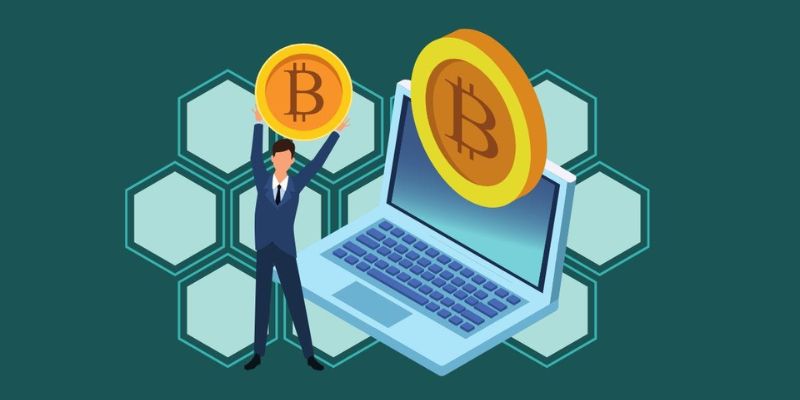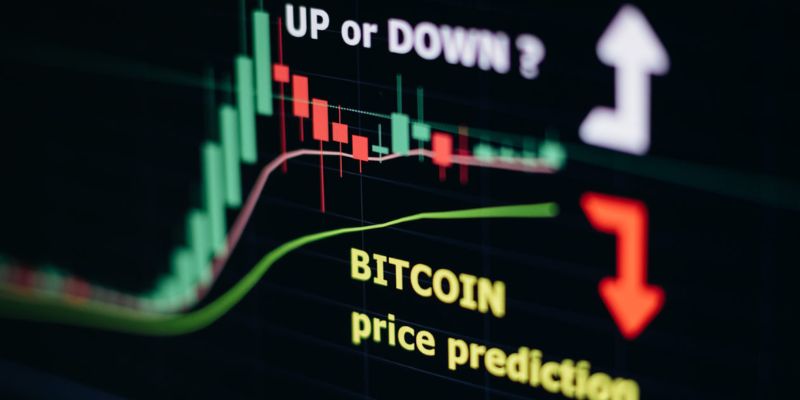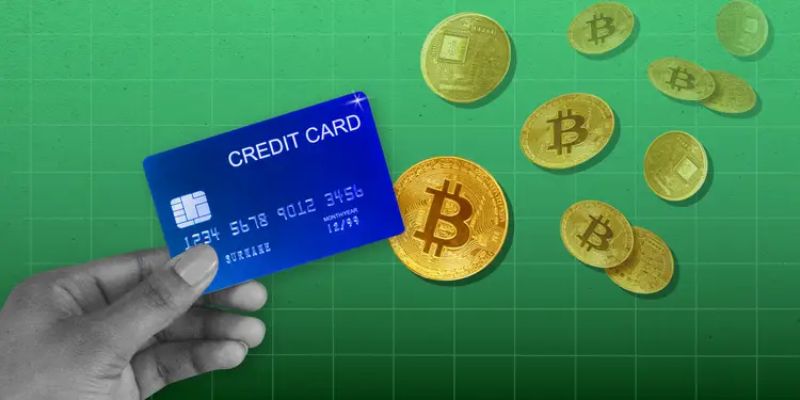How do crypto exchanges hide fees? If you’ve ever traded crypto, you know fees can take a bite out of your investment, often without a clear reason. I’m here to pull back the curtain. The truth is, some exchanges aren’t upfront about their charges, slipping extra costs into several corners of your trading process. I won’t stand for it, and neither should you. Let’s dive into this finance maze and spot those hidden charges that sneak up on your wallet.
Deciphering Hidden Fees in Crypto Exchange Platforms
The Realities of Crypto Trading Costs
When you trade crypto, you see charges everywhere. Each trade, deposit, or withdrawal adds up. But sometimes, exchanges slip in fees you don’t see right away. They tuck them neatly out of sight, hidden like a coin in tall grass. I’m here to guide you through the blades to spot those sneaky charges.
Fees vary on different platforms. Some are upfront, like withdrawal fees, but others are sneaky. To uncover these hidden cryptocurrency fees, it’s crucial to read the fine print. That’s where exchanges often list extra costs. They may look small, but they will eat into your profits like tiny cookie monsters.
Unveiling the Veil on Hidden Cryptocurrency Fees
Crypto exchanges might not shout about every fee. Who would, right? But hidden fees can shock you when you check your balance. So how do they do it? Let’s take a deep dive.
One common place they hide fees is in the exchange rate. This is the exchange rate margin. The rate you see is not always the rate you get. The gap between them can be a sneaky fee.
Then, there are maker-taker fees. If you set a price to buy or sell—that’s making—you often pay less. If you take a price already set, you pay more. Exchanges say it rewards those who make trades possible. But it’s often a way to charge more under the radar.
Crypto trading platforms also use tiers. If you trade a lot, you pay less per trade. But small traders often pay more. It’s a hidden fee unless you trade big.
Also, some claim zero fees. But hey, running an exchange costs money. So how do they earn? They might adjust the exchange rate or slow down your trade until they find a cheaper rate. That’s a hidden cost, right there.
Remember the flat fees versus percentage costs? Some exchanges charge a flat rate for small transactions, which can be a lot if you only trade a little. It’s key to figure which is less: flat rate or percent.
One last sneaky spot is slippage. That’s when your trade slips to a worse rate than you thought. It’s not always avoidable but know that it can be a hidden charge if the platform’s system is slow.
My pro tip? Always read the details and compare fees between exchanges. Know that if a deal sounds too good to be true, it might just be. And the best weapon against hidden fees? Information. So dig into those details before you trade. Your wallet will thank you.
Analyzing Withdrawal and Deposit Fees
Blockchain Network Fees: The Hidden Cost in Withdrawals
When you pull money out of a crypto exchange, you may notice more cash missing than you expected. Let’s dig into that. Each time you request a withdrawal, the blockchain network takes a cut. Yes, the very system that makes your coins move has its hand out.
You see, miners or validators run the show. They confirm each transaction. For this, they need payment: the blockchain network fee. Think of it like a tip for the waiter. Only, you don’t decide how much—you just pay up.
The kicker is, exchanges might not tell you about this fee up front. Your $50 Bitcoin withdrawal could end up $45 in your wallet. “Where did my $5 go?” you wonder. It went to the miners. This reality hits hard when extracting smaller sums due to a hefty slice cut by the network fee.
To make it sting less, find out the fee beforehand. Every coin has its own rate. Ethereum might cost more than Litecoin, for instance. Check the details before you hit ‘send’.
Cryptocurrency Exchange Tariffs on Deposits
Now, putting money into an exchange seems straightforward, right? You might get charged here too. Shocked? I was too! Some sneaky platforms may slip in a fee for just topping up your account. And it gets messier with different methods.
If you use a bank transfer, they might let you do it for free. But watch out for credit cards. They treat it like a high-risk gamble, ramping up the cost for the thrill. Got a $100 deposit? You could lose a few bucks just for using plastic.
And let’s chat about fiat to crypto. Exchanging your dollars or euros for digital gold means a tariff could hit you there too. They weave it into the conversion rate. So when they convert your cash, imagine them taking a little tax for themselves.
Remember, not all exchanges are crafty. Some stand tall with transparent crypto billing. They show all the costs up front—no surprises. To spot them, scour their fee structure. It’s a map that leads to the treasure of trusty trading.
Scour the terms, hunt the FAQs. Find where they stash the truth on crypto withdrawal fees and deposit fees in crypto trading. The game is all about knowing the ropes and joining exchanges that play fair with your funds. Trust goes a long way in this wild crypto world.
Uncovering these fees is like a treasure hunt, but instead of hidden gems, we’re spotting hidden crypto costs. So fellow crypto traders, arm yourself with knowledge. Don’t let hidden fees chip away at your stash. Keep your coins where you can see them, and trade smart.
Exchange Rate Margins and Transaction Costs
Understanding Exchange Spreads and Their Impact
Let’s dive into exchange rates. You must know, each crypto trade includes a price gap. This is called a spread. It’s the difference between buying and selling prices. Crypto trading costs can sneak in through these. So, exchange spreads impact your wallet more than you might think.
Crypto exchanges earn money when you trade. They set buying prices a tad higher than the true market price. Selling prices are often a bit under it. This difference, or the spread, can be a hidden cryptocurrency fee to watch out for. It changes often and is tricky to spot. But don’t worry! I’m here to help you uncover these exchange fees.
Think about it like when you trade games with friends. You might trade a newer game for two older ones. The value seems fair. But is it? It’s much like when you trade coins on a cryptocurrency platform. There’s a hidden value in the trade. It’s this sneaky spread that can cost you.
Spotting Hidden Crypto Costs in Exchange Rate Margins
Ever hear of slippage? It’s when your order costs more than expected. It happens during fast market moves. Or when there’s low volume. Spotting hidden crypto costs is crucial for your bottom line. And these slippage costs can be part of it.
Crypto withdrawal fees also come to play. They change often but are set in stone when you start a withdrawal. Withdrawal charges in Bitcoin exchanges can surprise you when too high. Alongside these, the blockchain network fees add to your cost. They are needed for miners or validators who keep the coin’s network running.
When you add money, watch out for deposit fees in crypto trading. Some platforms tag on a small charge for just adding funds. These cryptocurrency exchange rate margins can make or break your trade. That’s because small fees add up fast if you trade often.
It’s not all bad news, though. Knowledge helps you cut these costs. You can switch to exchanges that offer transparent crypto billing. Or look for ones with a fair fee structure of crypto exchanges. They can have lower and clearer fees.
Some ways to save are comparing fee structures. Fee comparison in crypto exchanges takes time but is worth it. Some exchanges also offer ways of minimizing fees in cryptocurrency trading. And always check for hidden fees in crypto transactions when you pick a platform.
Hidden cryptocurrency fees can slide in without notice. It’s like buying a snack and later finding out the price was higher due to a hidden fee. Not a great feeling, right? That’s why, when trading crypto, you must stay sharp. Watch out for deceptive fee practices in the crypto world.
Now you know what to look out for and maybe even save a coin or two. Remember, in the land of crypto, knowing is half the battle. And defeating hidden fees gives you the winning edge. Keep these tips in mind, and happy trading!
Fee Structures and Their Hidden Complexities
Fee Comparison Across Crypto Exchanges
Ever wonder why paying for crypto feels tricky? Let’s talk shop. Every exchange has a fee. You might not see it, but it’s there, hiding. It’s like a sneaky ninja. You trade, withdraw, or deposit, and boom, you pay extra. Why does this matter? You work hard for your money, right? So knowing where it’s going is key. Now, crypto exchanges are smart. They know presenting low-cost trading attracts customers. So they might say, “Look, our trading fees? Super low!” But don’t get fooled. Compare exchanges. What’s the catch? You’ll often find it in withdrawal charges.
One place may charge less to trade but slaps a hefty fee when you take money out. Another might do the reverse. And hey, some even put a price tag on just moving your money in. That’s right; deposit fees in crypto trading can bite. Each platform is different. Like snowflakes. No two fee policies are the same. You’ve got to dig in, read the small print, and figure it out. This is not just about being smart with your money. It’s about being in control.
Maker-Taker Fees and the Illusion of Low Costs
Now let’s break down this maker-taker thing. These are fancy terms for a simple idea. If you make a market by offering crypto for sale or purchase, you’re a “maker.” You add to the book. If you take an offer, bingo, you’re a “taker.” Exchanges dig makers. Why? They help fill the book with deals. So, exchanges give makers better fee deals. But again, watch out. The low maker fees look great, but the taker fees might get you.
When crypto trading costs pop up, it’s easy to miss the details. They say, “Our maker fees? Super cheap!” But if you’re often taking, you might pay more than you think. What’s more, high-frequency traders can shake things up. They might grab the low maker fees, leaving casual traders with higher costs. This isn’t just about fees. It’s about fairness. Understanding how these fees play out is super important.
Crypto service charges don’t have to be scary. They’re just a part of this digital world we’re in. But by spotting hidden crypto costs, we level the playing field. We can call out the exchanges and say, “Hey, let’s make this fair.” So next time you’re ready to trade, take a pause. Look for hidden cryptocurrency fees. Check out those withdrawal charges and deposit fees. Compare the fee structures carefully.
Do blockchain network fees sneak up on you? Yep, they’re often there lurking with each withdrawal. What about fiat to crypto conversion fees? They’ll get you too if you’re not careful. Fee comparison across crypto exchanges might sound like homework. But hey, it’s your coin. And who says homework can’t be fun when it saves you money, right? Maker-taker fees might promise low costs, but now you know to look closer. Don’t be tricked by the illusion. Always read the fine print and know exactly what you’re getting into. It’s the smart way to do crypto.
We’ve just looked deep into the hidden fees that crowd the world of crypto trading. From the sneaky costs in trading to the fees you pay when you put money in or take it out. We’ve uncovered that withdrawal and deposit fees often come from the blockchain itself and how exchanges add their own charges.
We also peeled back the layers on exchange rate margins. Remember, the price you see may not be the price you get. Those exchange spreads can take a bite out of your wallet without you even knowing it!
Lastly, we compared fees across platforms and busted the myth of low-cost trades with the truth about maker-taker fees. There’s a whole lot going on behind that “low fee” curtain!
So, keep your eyes wide open. Use what you’ve learned today to dodge those hidden fees. More of what you earn will stay in your pocket. Play it smart and make your every crypto move count!
Q&A :
How do cryptocurrency exchanges conceal their fee structure?
Cryptocurrency exchanges may not always be upfront about their fees, using complex fee structures and hidden costs to obscure the actual cost of transactions. Often, fees are embedded in the exchange rate as a markup, while other operational fees might only become apparent during the withdrawal or deposit process. It’s important for users to thoroughly review the exchange’s terms and conditions to understand the full scope of potential charges.
What types of hidden fees can users expect with crypto exchanges?
Users should watch out for several types of hidden fees when using crypto exchanges. This could include withdrawal fees, transaction fees, network fees, and even fees tied to payment methods. Additionally, some exchanges charge fees for account inactivity or maintenance, which might not be immediately evident. Reading through the entire fee schedule and FAQs on the exchange’s website can provide clearer insight into these costs.
Are there tell-tale signs that a crypto exchange is not transparent with its fees?
Yes, some signs might indicate a lack of transparency regarding fees on a crypto exchange. These include a very complex fee structure that is difficult to understand, lack of readily accessible information on fees, discrepancies between advertised fees and those applied, and significant differences in exchange rates compared to the average market price, which might suggest hidden fees in the spread.
How can I avoid or minimize hidden fees on crypto exchanges?
To avoid or minimize hidden fees, it’s essential to do thorough research before selecting a crypto exchange. Compare fee structures, read user reviews, and look for exchanges that offer a transparent and straightforward fee policy. Furthermore, consider the total cost of operations, including deposit, transaction, and withdrawal fees, and be wary of exchanges with significantly lower trading fees as they might make up for it in other less obvious areas.
What should I do if I suspect a crypto exchange is hiding fees?
If you suspect that a crypto exchange is hiding fees, you should first reach out to their customer support for clarification on their fee policy. Ensure you keep a record of all transactions and fees incurred. If the response doesn’t satisfy your queries, you might consider switching to another exchange with a more transparent fee structure. It’s also advisable to share your experience on public forums and review platforms to inform and protect other users.



